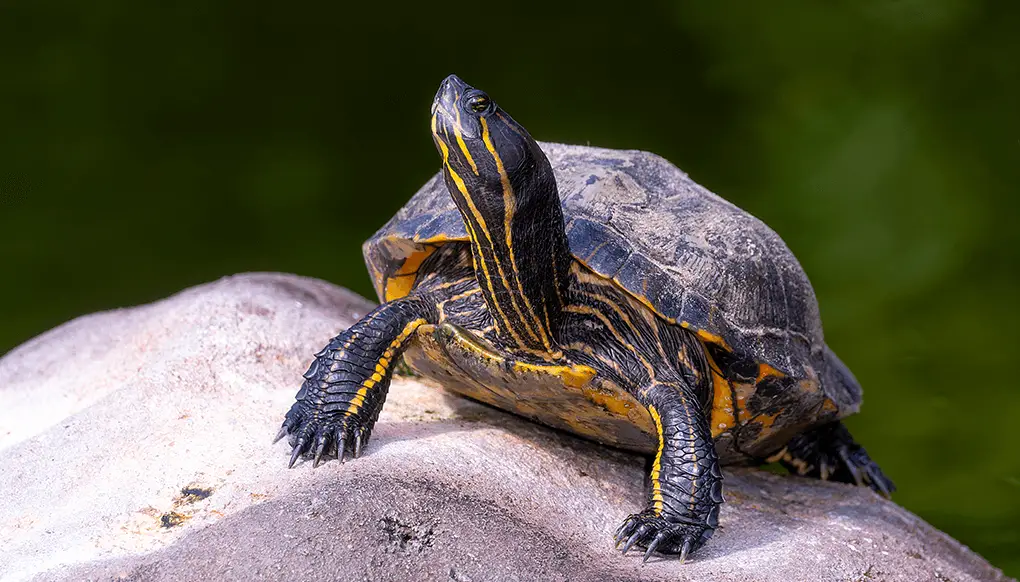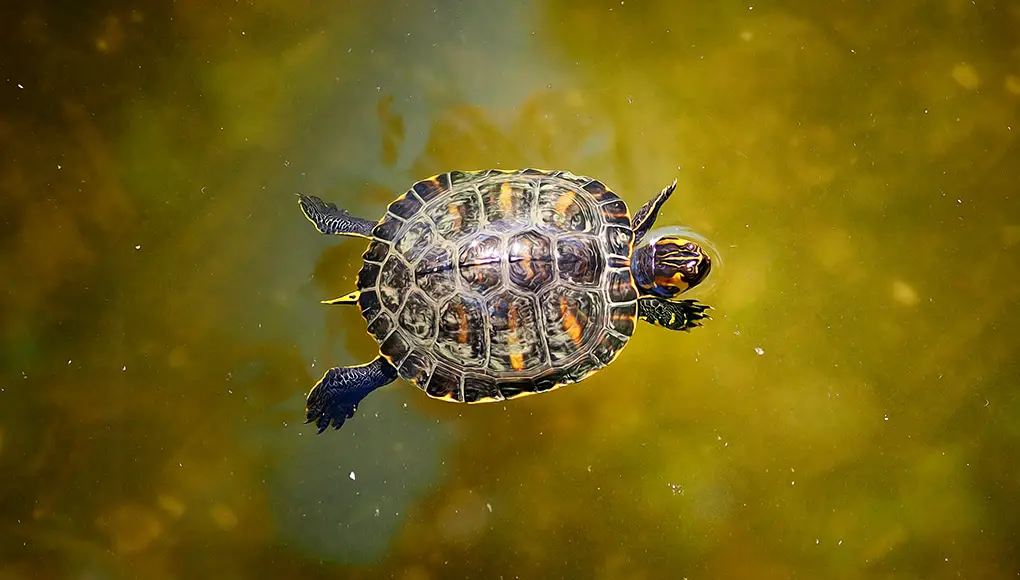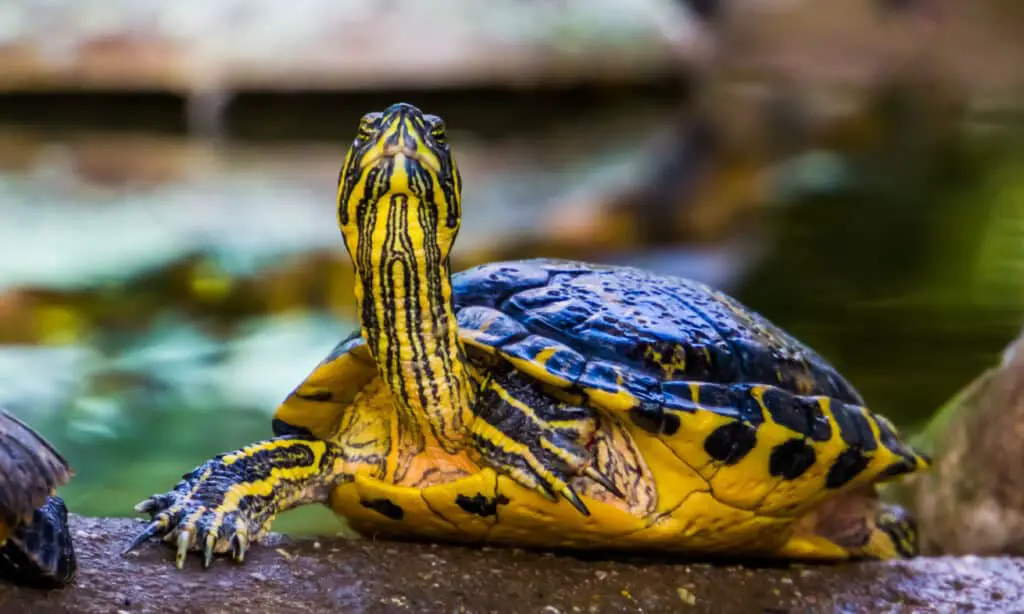Do Sea Turtles Hibernate

Introduction
Do Sea Turtles Hibernate: Sea turtles are among the Earth’s most captivating marine creatures, renowned for their ancient lineage and incredible journeys across vast ocean expanses. These majestic reptiles have long fascinated scientists and nature enthusiasts alike, and one intriguing aspect of their marine biology that has raised questions for years is whether sea turtles hibernate.
Hibernation is a well-known phenomenon in the animal kingdom, primarily associated with mammals like bears and rodents. It involves a state of reduced metabolic activity, allowing animals to conserve energy during harsh environmental conditions, particularly cold winters.
This exploration delves into the enigmatic behavior of sea turtles during the winter months. We’ll unravel the mysteries surrounding their metabolic adaptations and investigate whether they exhibit hibernation-like states. Understanding such potential adaptations could provide valuable insights into the resilience of these ancient creatures in the face of environmental challenges, including changing ocean temperatures and habitat alterations.
As we embark on this journey into the world of sea turtles, we aim to shed light on their remarkable abilities and uncover the mechanisms that allow them to thrive in diverse oceanic conditions.

How long can sea turtles hibernate?
Unlike some freshwater turtles, sea turtles cannot hibernate underwater. They have to resurface every few hours to breathe. These turtles only resurface for a few minutes.
Sea turtles do not hibernate in the traditional sense, but they do exhibit a behavior known as cold-stunning in response to dropping water temperatures. This state of torpor allows them to conserve energy and endure harsh conditions. The duration of cold-stunning can vary depending on the species and the severity of the temperature drop. Some sea turtles may remain in this state for several days to several weeks, while others might endure it for months.
For instance, loggerhead sea turtles have been known to endure cold-stunning for up to several months if the water temperatures remain dangerously low. It’s important to note that cold-stunning poses significant risks to sea turtles, as extended exposure to cold water can lead to health complications or even mortality.
Conservation efforts play a crucial role in rescuing and rehabilitating cold-stunned turtles, highlighting the need for vigilance in protecting these remarkable creatures and their habitats from the escalating threats of climate change.
Why do turtles hibernate in water?
With very few exceptions (e.g., box turtles), adult turtles cannot survive freezing temperatures; they cannot survive having ice crystals in their bodies. This is why freshwater turtles hibernate in water, where their body temperatures remain relatively stable and will not go below freezing.
Turtles, including sea turtles, do not hibernate in the same way many mammals do on land. Instead, they exhibit a behavior known as brumation. Brumation is a reptilian form of dormancy characterized by a slowing down of metabolic processes. While some freshwater turtles do brumate in water, it’s important to note that not all turtles do so, and not exclusively in water.
The choice of brumating in water is primarily influenced by a turtle’s species and habitat. Freshwater turtles, for example, may choose to brumate in the water because it provides a stable, temperature-regulated environment. The water retains heat better than air, which helps to buffer against extreme temperature fluctuations. Water offers protection from potential predators during their dormant phase.
However, it’s worth emphasizing that not all turtles, especially terrestrial species, brumate in water. Some may seek shelter in burrows on land. Additionally, sea turtles, being adapted to marine environments, do not brumate in the traditional sense. Instead, they exhibit behaviors like cold-stunning in response to plummeting water temperatures. This state of torpor helps them conserve energy during adverse conditions. Overall, the choice of brumation location is dictated by a turtle’s evolutionary adaptations and its specific ecological niche.
How long do sea turtles sleep for?
Green sea turtles sleep for long durations of time throughout the day. In fact, studies conducted on habits of green sea turtles indicate that they rest for approximately 11 hours a day. That’s nearly half of their daily routine!
Sea turtles have a unique sleep pattern due to their marine lifestyle. Unlike land-dwelling creatures, sea turtles are voluntary breathers, which means they must consciously come to the surface to breathe. This fundamental aspect of their biology profoundly influences their sleep behavior.
Sea turtles engage in what is known as unihemispheric slow-wave sleep (USWS). This means that only one hemisphere of their brain enters a restful state while the other remains alert and active. This allows them to maintain essential functions such as surfacing for air and staying vigilant for predators even while sleeping.
The duration of a sea turtle’s sleep can vary, but they generally spend a significant portion of their day in this state. Some studies suggest that sea turtles engage in bouts of USWS for several hours each day, interspersed with periods of activity. Factors like water temperature, food availability, and predator presence can influence their sleep patterns.
It’s important to note that while sea turtles have adapted to sleep in this manner, disturbances in their environment, such as human activities or natural disasters, can disrupt their resting patterns and have potential impacts on their overall health and well-being. Therefore, understanding and respecting the sleep habits of sea turtles is crucial for their conservation and protection.
How do sea turtles sleep underwater?
Sea turtles can sleep at the surface while in deep water or on the bottom wedged under rocks in nearshore waters. Many divers have seen green turtles sleeping under ledges in reefs and rocks.
Sea turtles have evolved remarkable adaptations to sleep underwater, a necessity given their marine habitat. They employ a phenomenon known as unihemispheric slow-wave sleep (USWS), a unique form of rest where one hemisphere of the brain remains active while the other enters a state of restfulness.
During USWS, the active hemisphere oversees vital tasks such as maintaining buoyancy, adjusting their position in the water, and monitoring for potential threats. The resting hemisphere allows for rejuvenation and recovery, similar to how land-based animals experience sleep.
Sea turtles have an inherent buoyancy that helps them float effortlessly. Their shells, lungs, and body structure contribute to their ability to maintain an adequate position in the water while they sleep. This adaptation allows them to conserve energy and rest effectively.
However, it’s important to note that despite these adaptations, human activities like boat traffic, pollution, and habitat destruction can disrupt sea turtles’ natural sleep patterns, potentially leading to stress and health issues. Understanding and respecting the delicate balance of their underwater sleep is crucial for their conservation and well-being in our rapidly changing marine environments.
Can you wake up a hibernating turtle?
When it is time to wake up your tortoise their hibernating box should be moved from where it was being kept for their hibernation and moved to a room that is warm (room temperature). They should be left to warm up for a few hours.
Waking up a hibernating turtle is generally discouraged, as it can be highly stressful and potentially harmful to the animal. Hibernation, or brumation in the case of turtles, is a critical survival mechanism that allows them to conserve energy during harsh environmental conditions. During this period, their metabolic processes slow down significantly, and they become less responsive.
Disturbing a hibernating turtle can cause it to become disoriented, stressed, and may even lead to health complications. Sudden awakenings can be particularly detrimental as the turtle’s body might not be prepared to resume regular activities.
If there is a valid reason to disturb a hibernating turtle, such as for research or conservation purposes, it should be done by trained professionals who understand the specific needs and responses of the species in question. Even then, it should be approached with extreme care and ideally under the guidance of a veterinarian or experienced wildlife biologist.
Can turtles wake up from hibernation?
Sometime during the months of March and April, turtles/tortoises can be removed from brumation environments or may naturally awaken if kept outdoors when the temperature stabilizes. Smaller specimens should not hibernate for any longer than 10 weeks. Large specimens should go no longer than 14 weeks.
Turtles can wake up from hibernation, although the process is not immediate. Hibernation, or brumation in the case of turtles, is a state of dormancy in which their metabolic processes slow down dramatically. This adaptation allows them to conserve energy during periods of harsh environmental conditions, typically in response to cold temperatures.
As temperatures rise and become more favorable, turtles will naturally begin to emerge from their state of brumation. This awakening is a gradual process and can take some time, as their bodies need to adjust to the changing conditions. During this period, they may be sluggish and disoriented, but they will gradually regain their normal activity levels.
It’s important to note that disturbing a turtle that is in the midst of waking up from hibernation can be stressful and potentially harmful to the animal. Therefore, if you come across a hibernating turtle, it is best to observe from a distance and allow it to awaken naturally.
In cases where a hibernating turtle is found in an unsafe location (e.g., a road), it may be gently relocated to a safer area, but this should be done with extreme care and preferably by someone with experience in handling turtles.
How do sea turtles survive during periods of reduced food availability?
Sea turtles have evolved several remarkable adaptations to endure periods of reduced food availability in their marine habitats. One key strategy is their ability to slow down their metabolic rate, allowing them to conserve energy during lean times. This means they can survive on fewer resources for extended periods.
Sea turtles are known to exhibit a phenomenon called “cryptic feeding.” This behavior involves consuming small amounts of food when it is available, even during times of scarcity. They can efficiently extract nutrients from their limited intake, making the most of what little sustenance they find.
Another crucial adaptation is their ability to migrate over vast distances. Sea turtles are capable of covering hundreds or even thousands of miles to seek out areas with more abundant food resources. This migratory behavior enables them to locate and exploit productive feeding grounds, enhancing their chances of survival.
Sea turtles possess an impressive ability to store fat reserves in their bodies. These reserves serve as a vital source of energy during times when food is scarce. This stored energy allows them to sustain themselves until they can find more plentiful feeding grounds.
Overall, the combination of metabolic flexibility, cryptic feeding, long-distance migration, and efficient fat storage equips sea turtles with the means to endure and survive through periods of reduced food availability in their dynamic ocean environments.
Do sea turtles hibernate like some land turtles?
Sea turtles do not hibernate in the same way as many land-dwelling turtles. Instead, they exhibit a behavior known as cold-stunning, which is a response to dropping water temperatures. Cold-stunning is a form of torpor where sea turtles become lethargic and their metabolic processes slow down. This adaptation helps them conserve energy during adverse environmental conditions.
While cold-stunning shares some similarities with hibernation, it is important to note that hibernation typically occurs on land, where animals like land turtles retreat into burrows or underground shelters to conserve energy during winter months. Sea turtles, being adapted to a marine environment, do not have the same options available to them.
Cold-stunning can be triggered by sudden drops in water temperature, particularly in shallow coastal areas. During this period, sea turtles may become less active, seek shelter in warmer waters, and reduce their feeding activities.
Understanding these distinctive behaviors is crucial for the conservation of sea turtles, as factors like climate change and human activities can lead to more frequent and severe cold-stunning events. Efforts to monitor and protect sea turtle habitats are essential in ensuring their survival in the face of these challenges.

Conclusion
Through extensive research and observation, it has become clear that sea turtles do not undergo true hibernation in the same manner as many terrestrial species. Instead, they exhibit a behavior known as “cold-stunning” in response to plummeting water temperatures.
During cold-stunning, sea turtles enter a state of torpor, slowing down their metabolic processes and becoming lethargic. This adaptive response helps them conserve energy and endure the challenging conditions of cold environments. However, unlike true hibernation, sea turtles remain semi-active and can be forced to seek warmer waters if the temperature drop becomes too severe.
Understanding the nuances of sea turtle behavior, especially in relation to temperature fluctuations, is crucial for their conservation. With global warming and climate change posing significant threats to marine ecosystem, it is imperative that we continue to research and monitor these magnificent creatures. By protecting their habitats and implementing conservation measures, we can ensure the survival of sea turtles for generations to come.



